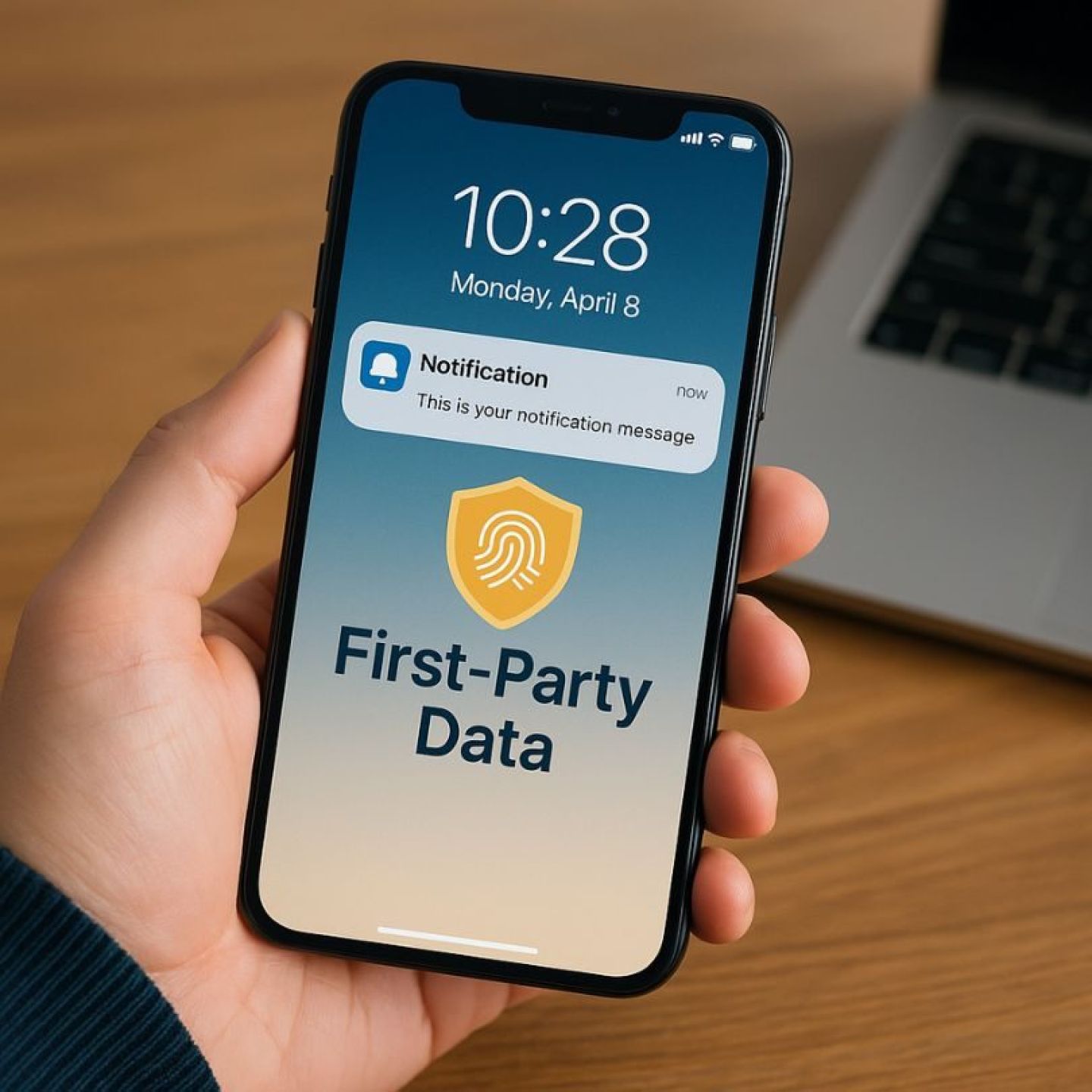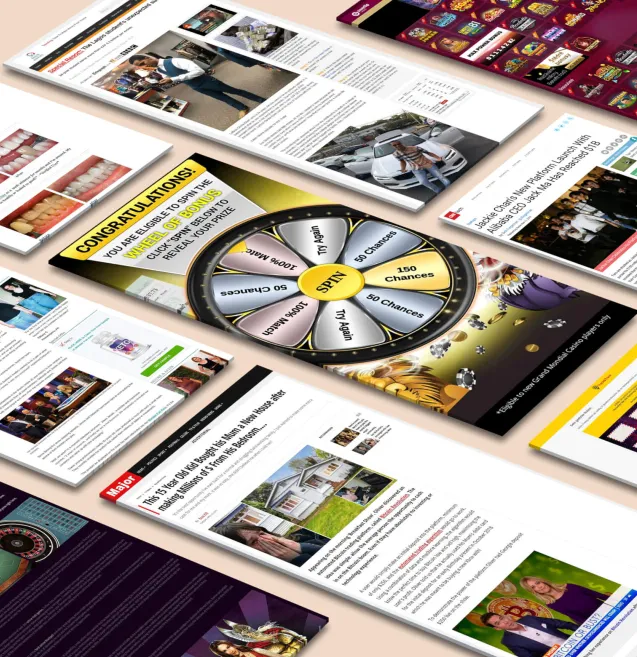
Our spy tools monitor millions of push notification ads from over 90+ countries and thousands of publishers.
Get StartedFirst-party data—the information you collect directly from your customers through website visits, app interactions, and purchase history—has become the cornerstone of effective push advertising. This data comes straight from your audience with their explicit consent, making it both ethically sound and incredibly valuable for creating personalized marketing campaigns.
The world of digital advertising has changed dramatically. Data privacy regulations like GDPR and CCPA have reshaped how you can collect and use customer information. You can no longer rely on third-party cookies to track users across the web. This shift means your own first-party data isn't just useful—it's essential for building sustainable, compliant marketing strategies that actually work.
First-party data push ads rely on customer information you collect directly from your audience through multiple touchpoints. This data comes from real interactions people have with your brand, creating a foundation for targeted push notification campaigns.
You gather first-party data through several key channels:
The ethical edge of first-party data stems from direct user consent. When someone signs up for your push notifications or creates an account, they're explicitly agreeing to share their information with you. This transparency builds trust because users know exactly who's collecting their data and why.
You own this data completely. There's no middleman selling information to the highest bidder or sharing customer details across unrelated platforms. This exclusive access means you're working with accurate, reliable information that reflects genuine customer intent rather than assumptions made by third-party data brokers.
The world of digital advertising is going through a major change as third-party cookies decline becomes unavoidable. Big browsers like Safari and Firefox have already blocked third-party cookies, and Google Chrome plans to get rid of them completely. This change is mainly due to privacy laws such as GDPR in Europe and CCPA in California, which require stricter controls on how companies track and use consumer data without explicit permission.
You may have noticed how these changes have disrupted traditional advertising methods. Marketers who built their entire strategies around third-party cookies now face significant challenges:
The truth is tough: third-party cookies provided easy ways to understand customer behavior, but those easy ways came at the expense of user privacy. Brands that heavily relied on purchased data or cookie-based tracking are now scrambling to rebuild their marketing systems. Cookie-free push marketing isn't just a passing trend—it's the new standard you need to adopt.
This shift in regulations and technology forces you to rethink how you gather, manage, and use customer data for push advertising campaigns.
First-party audience targeting transforms generic push notifications into precision-crafted messages that resonate with individual users. When you collect data directly from your customers—tracking their browsing patterns, purchase history, and engagement metrics—you gain insights that third-party sources simply cannot provide.
You can segment your audience based on specific behaviors: users who abandoned their shopping carts, customers who haven't engaged in 30 days, or high-value buyers ready for premium offerings. This granular understanding allows you to craft personalized push ad campaigns that speak directly to each segment's needs and intentions.
Here's how first-party audience targeting enhances different aspects of your push ad strategy:
The data you own tells you when to send notifications, what content resonates, and which offers convert. You're not guessing about user preferences—you're responding to actual behavioral signals that users willingly shared through their interactions with your brand.
Data privacy in push advertising starts with transparency. You need to clearly communicate what data you're collecting, how you'll use it, and why it benefits your users. When you're upfront about your data practices, you build trust that translates into higher opt-in rates and better campaign performance.
User consent isn't just a legal checkbox—it's the foundation of ethical first-party data collection. You must obtain explicit permission before sending push notifications or collecting behavioral data. This means implementing clear opt-in mechanisms that explain the value exchange: users share their data, and you deliver relevant, personalized content that enhances their experience.
Compliance with GDPR and CCPA requires specific technical implementations in your push advertising strategies:
You should regularly audit your data collection practices as privacy regulations continue evolving globally. Countries like Brazil, India, and Australia have introduced their own data protection frameworks, meaning your push advertising strategy needs flexibility to adapt to regional requirements.
The investment you make in compliance infrastructure today protects your business from costly penalties while positioning you as a privacy-conscious brand that respects user autonomy.
Customer Data Platforms (CDPs) have become essential infrastructure for managing first-party data at scale. These platforms aggregate customer information from multiple touchpoints—your website analytics, mobile app interactions, CRM systems, email engagement metrics, and purchase histories—into unified customer profiles. You get a single source of truth that eliminates data silos and enables real-time activation across channels.
The real power emerges when you connect your CDP to major advertising platforms. Integration with Google Ads allows you to create custom audiences based on specific behavioral triggers, such as users who abandoned their cart or customers who haven't purchased in 90 days. Meta Ads integration enables you to build lookalike audiences from your highest-value customers, expanding reach while maintaining relevance. You can push these segments to TikTok, LinkedIn, and other platforms simultaneously, ensuring consistent messaging across your entire advertising ecosystem.
AI-driven ad targeting takes this capability further by analyzing patterns within your first-party data to predict future behaviors. Machine learning algorithms identify which customers are most likely to convert, churn, or respond to specific offers. You can automate audience creation based on predictive scores, dynamically adjusting your push notification strategies as customer behaviors evolve. This technology transforms static segmentation into dynamic, self-optimizing campaigns that improve performance without constant manual intervention.
The advertising landscape is shifting rapidly, and cookieless marketing strategies are no longer optional—they're essential. First-party data provides the foundation you need to maintain effective targeting and personalization as browsers phase out third-party cookies completely. Unlike external data sources that disappear with regulatory changes, your owned data remains stable and accessible.
Building future-proof advertising systems means investing in infrastructure that adapts to regulatory evolution. You're creating a data ecosystem that responds to GDPR updates, new state-level privacy laws, and browser policy changes without disrupting your campaigns. First-party data gives you this flexibility because you control the collection, storage, and usage directly.
Your first-party data feeds machine learning algorithms with accurate user signals, improving ad platform performance even without cookies. Google's Privacy Sandbox and similar initiatives from Meta rely heavily on aggregated first-party signals to power their targeting capabilities. When you provide rich, consented data to these platforms, you maintain campaign effectiveness while respecting user privacy.
The competitive advantage becomes clear: brands with robust first-party data strategies continue reaching their audiences precisely, while competitors dependent on third-party cookies struggle with diminishing returns. You're building direct relationships with customers through transparent data practices, creating sustainable marketing that strengthens rather than erodes trust. This approach positions your push advertising campaigns to thrive regardless of technological or regulatory changes ahead.
First-party data is extremely important in push advertising, especially during this time of privacy regulations and technological changes. Throughout this article, we have discussed why first-party data is becoming increasingly significant in push advertising. It allows for accurate personalization and ensures compliance with evolving privacy laws.
Now is the time to commit to a first-party data-centric approach. Start by reviewing your current methods of collecting data, investing in the right technology infrastructure such as Customer Data Platforms (CDPs), and establishing transparent relationships with your audience through clear consent mechanisms. The marketers who will succeed in the coming years are those who understand that first-party data is not just a requirement for compliance, but also a valuable competitive advantage for building meaningful connections with customers and achieving long-term growth.
Receive top converting landing pages in your inbox every week from us.
Tips & Tricks
Push notifications can be a powerful tool for driving engagement and conversions during the festive season. Discover practical tips for crafting timely, personalized, and irresistible messages that capture attention instantly. Learn how to balance frequency, tone, and timing to maximize results without overwhelming users. Perfect for marketers ready to make their holiday push campaigns truly impactful.
Liam O’Connor
7 minDec 2, 2025
Must Read
Successful holiday marketing goes beyond a single channel—it’s about creating harmony between Native, Push, and Pop ads. Learn how to integrate these three formats to reach audiences at every stage of the buying journey. Discover strategies for maximizing visibility, engagement, and conversions during the busiest shopping season. A must-read for advertisers aiming to deliver cohesive, high-impact holiday campaigns.
Priya Kapoor
7 minNov 30, 2025
Must Read
This blog uncovers how AI can transform holiday marketing campaigns into high-performing, data-driven successes. It explains how AI tools help optimize targeting, personalize messaging, and predict consumer behavior for better engagement. Readers will learn practical ways to fine-tune their campaigns and boost conversions during the busy holiday season. Ideal for marketers looking to maximize results and efficiency with AI-powered strategies.
Marcus Chen
7 minNov 21, 2025




